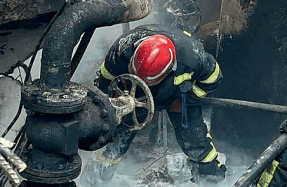This month, geologists will select a site that demonstrates most vividly how humans have changed the structure of our planet’s surface. They will choose a place they believe best illustrates when a new epoch – which they have dubbed the Anthropocene – was born and its predecessor, the Holocene, came to an end.
The Holocene began at the conclusion of the last ice age 11,700 years ago as the great glaciers that had previously covered the Earth began to retreat. In their wake, modern humans spread inexorably across the planet.
flowered during the Holocene




